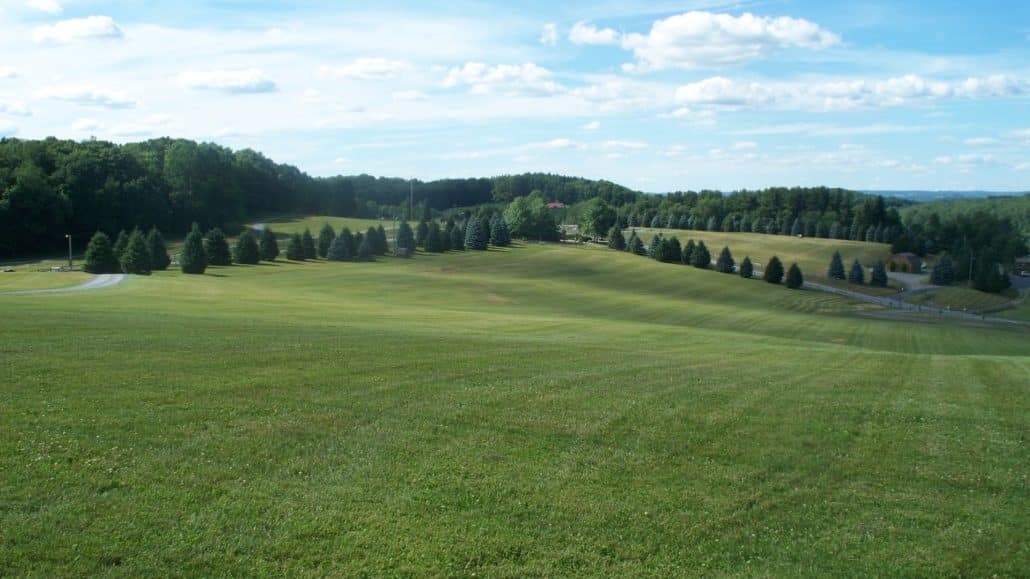
From the 1920s through the 60s, Jewish middle and working class families from New York City flocked to the Catskills, a mountainous region about 100 miles north of the city. There, they congregated in summer resorts friendly to their ethnicity because other vacation areas of the country discriminated against them.
For entertainment, they frequented Catskill theaters where they listened to comedians who would go on to become famous nationally. The extensive list of comedy stars who got their start in the Borscht Belt, as the area was called, included Woody Allen, Joan Rivers, Milton Berle, George Burns, Phil Silvers, Jack Benny, and scores of others. With the decline of ethnic barriers in the 60s, the Catskill resorts felt the impact as Jewish vacationers looked elsewhere for their holiday sojourns. One by one, they either closed or were repurposed.

Currently, the Catskills are being touted as a recreational destination, where a mix of scenic beauty, culinary prowess and a growing arts and crafts community add to its appeal as a tourist destination. At the end of June, Governor Andrew Cuomo hosted the first Catskill Summer Challenge, in which elected officials and tourism industry leaders joined with outdoor enthusiasts to try their hand at Catskill recreational offerings such as biking, fly fishing, kayaking, rafting, and hiking.
At a conference at the Bethel Woods Center for the Performing Arts following the Challenge, Cuomo announced a $5 million ad campaign to promote the Catskills and strengthen the area’s tourism. The center is located in the town of Bethel, home to the famous 1969 Woodstock Festival where 400,000 music-lovers met over a three-day period in August to listen to 32 acts and enjoy what has since been named a pivotal moment in popular music culture.
Even before the governor’s ad campaign, the Catskills’ tourism clout accounted for an economic impact estimated at $1.1 billion. For three days before the Challenge, I managed to tour the four-county region exploring the area’s recreational, culinary, scenic, and cultural riches.
Here’s what I found:
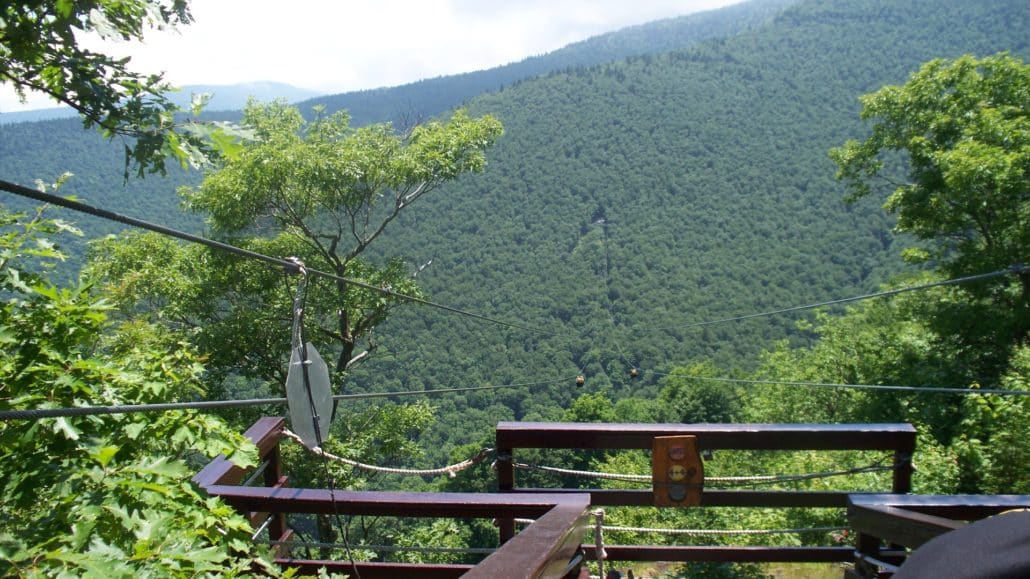
A taste of the Catskills
My first taste of the Catkills came at the Emerson Resort & Spa in Mt. Tremper, an Adirondack-style hostelry that opened in March 2007 and is also the home to the “world’s largest kaleidoscope.” The instrument is installed in a restored 60-foot tall silo of a former dairy barn. Guests can either lie on the floor (the recommended method) or lean against a support and watch the geometrical colors splay at the top in sync with recorded music. The 15-minute visual adventure is free to overnight guests and a small fee for others.
The inn gets its name from Ralph Waldo Emerson, an essayist and poet whose “Nature” was inspired by Catskill beauty. Note: You’ll find Emerson quotes scattered throughout the resort. If so inclined, you might want to commune with nature yourself by hiking the trail that starts just down the road and climbs to the top of 2,740-foot tall Mt. Tremper.
I’d be remiss not to mention the incredible food served in the Inn’s Woodnotes Grille. It’s billed as “Catskill creative cooking” and is a match for the view of Mt. Tremper as seen through the restaurant’s large windows.
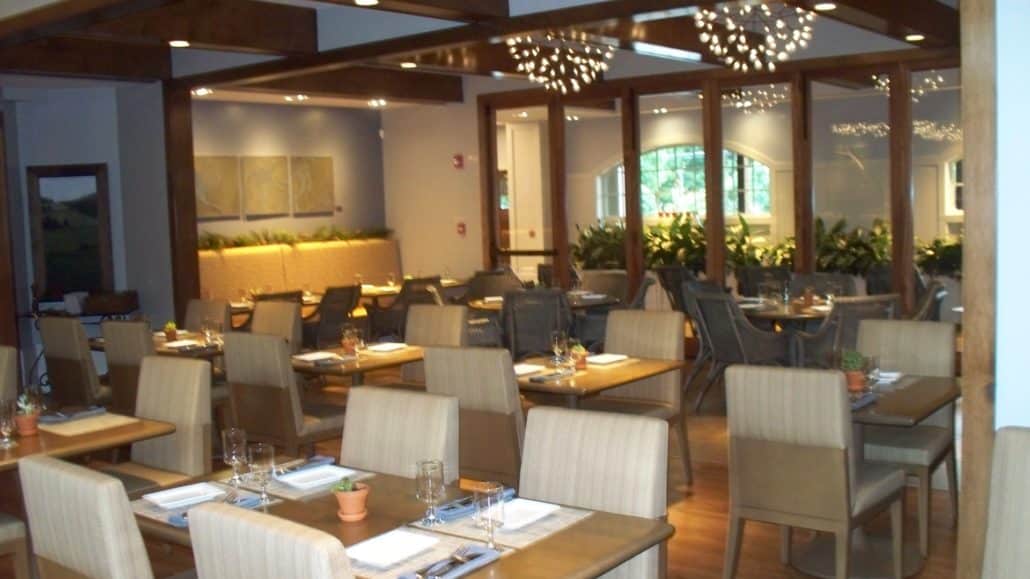
Part of the fun of exploring the Catskills is driving along the valley roads through quaint villages with a distinctive architecture and earth-tone color schemes. They come with equally colorful names like Phoenicia, Ghent, Delhi, and Woodstock, my favorite of them all.

Located 60 miles from the famous rock concert that bears its name, Woodstock has long been an arts colony and now sports a hive of creative folk—many of whom man the chic string of unique shops along the main streets and byways. One standout establishment on the town green, the Garden Cafe, has been vegetarian and vegan for over 30 years, and all the ingredients that go into its cuisine are organic (including the wines), gluten-free and GMO-free.
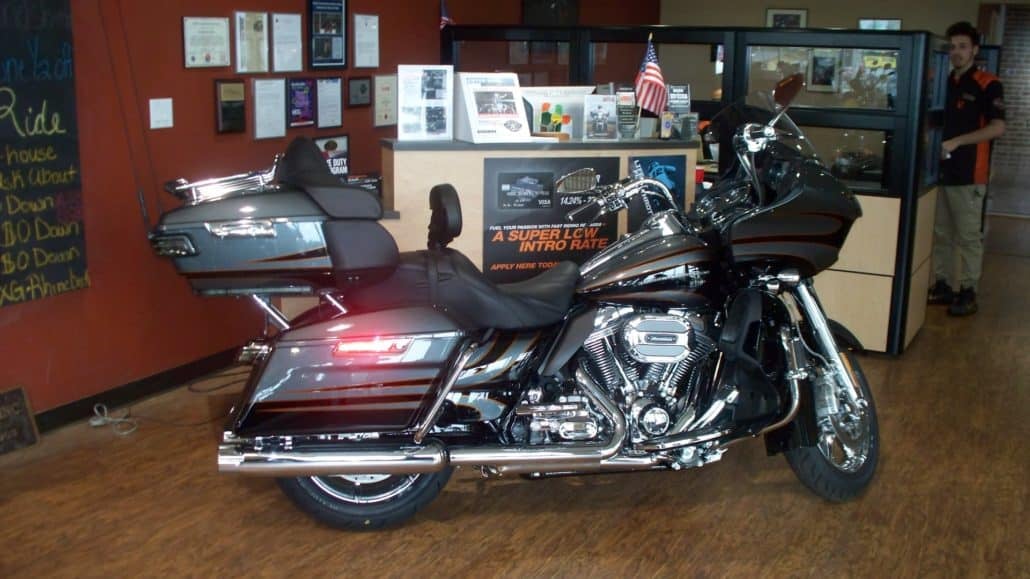
A quick peek inside the Woodstock Harley-Davidson in Kingston introduced me to a Harley-Davidson CVO Road Glide that came with a pricetag I could never have imagined. The fully loaded, customized-to-the-extreme hog sells for a whopping $42,500. For those who might want to tour the Catskills by bike, the dealership rents a wide variety of models including a helmet and rain gear starting at $99 per day. Part of the Governor’s Challenge, a motorcycle relay through the four Catskill counties included Joi Becker, Harley’s events manager and a veteran rider who finished her relay with the other participants at the Roscoe Beer Company, a firehouse-turned-brewery where scores of riders parked and enjoyed the music of a country band playing al fresco.
The road back to the Emerson took me past the Ashokan Reservoir (Native American for “place of fish”), a beautiful lake responsible for 40% of New York City’s daily water supply. You used to be able to drive all around the reservoir, but since 9/11, limited-access restrictions have been imposed (though it’s still possible to access the area around the aerator).
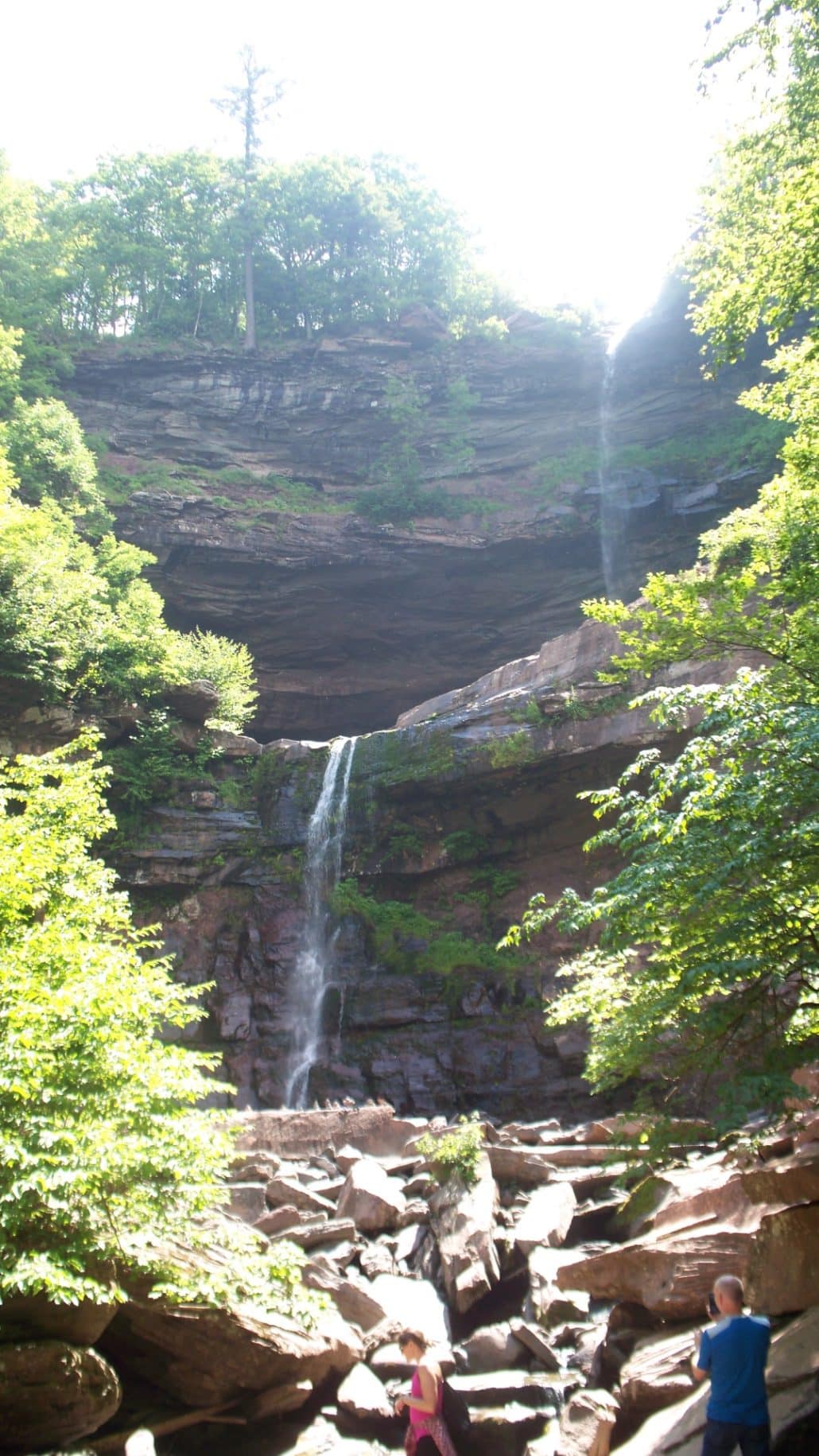
My second day in the region began by hiking the trail to Kaaterskill Falls, one of the highest in New York. The two-drop cataract yields a 260-foot payoff if you can navigate the fairly steep climb that gets a bit dicey near the end. Poets like William Cullen Bryant and artists like Asher Durand have all fallen under its inspirational spell, and the site has been a popular attraction ever since.
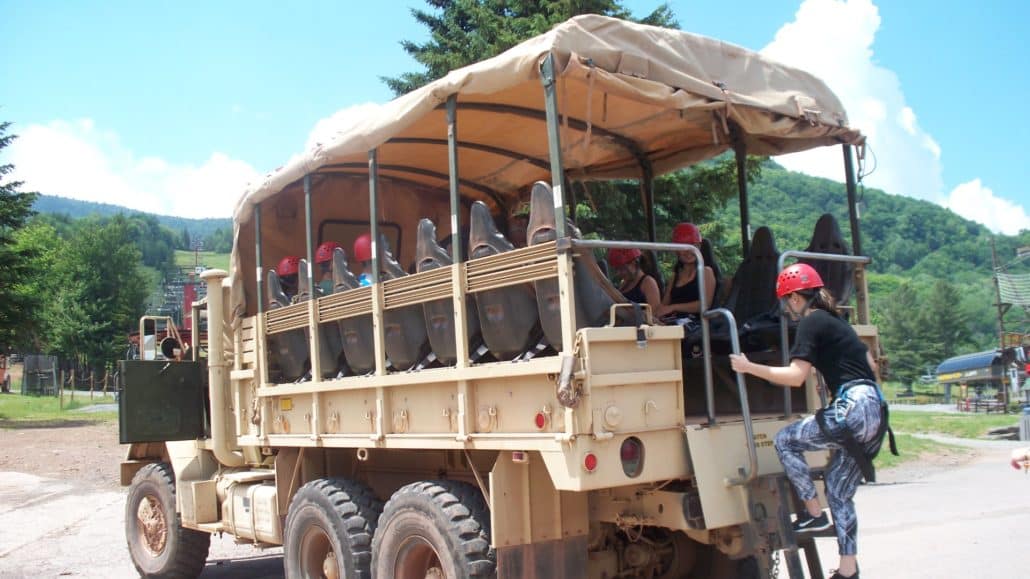
A drive to Hunter Mountain took me to the New York Zipline Adventure Tours, billed as the longest, fastest and highest zipline tour in North America.
After we geared up at the bottom of the mountain, a retrofitted truck climbed a steep, bumpy road to the top and let us off at the first station. I’d done five other ziplines before—in places like Cancun and Park City, Utah—but companions in my group said my mouth dropped when I saw the first summit zip, a double-line arrangement that bowed way across the valley to the other side letting two riders in tandem brave heights of 600-feet above the ground and speeds of up to 50 mph. Needless to say, it was a bit daunting, but once airborne, I loved every minute of the experience, including the walk over a rope bridge on the way back down.
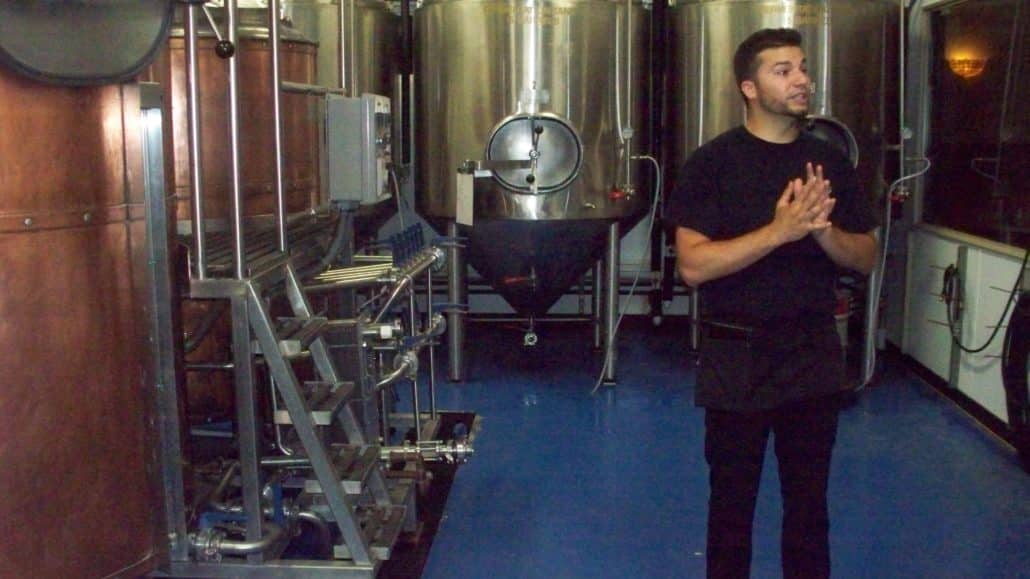
Dinner that evening took us to Angela’s Italian Bistro and Rip Van Winkle Brewing Company in Catskill, both housed in the same building. If longevity is any sign of success, Angela’s has been open since 1972 and is still serving the family recipes owner Tony LoBianco brought with him from his native Sicily. On the evening of my visit, LoBianco’s son Joey introduced me to a flight of six handcrafted beers, each one with its own distinct personality (read: flavor profile). They went well with my platter of linguini with white clam sauce.
In Delhi the next day at the Stone and Sawyer Lamp Facility, I got to meet some creative locals doing surprisingly innovative things. Owners Julian Peploe and David Ryan design and produce stoneware table lamps, but also open their facility to local crafters. Stone and Sawyer lamps can be found in the Smyth Hotel in Tribeca and have been featured in The New York Times, Wallpaper, Design Sponge, Martha Stewart Living, Architectural Digest, and Domino. Stone and Sawyer was also a 2015 Martha Stewart American Made Design Finalist. One of the resident crafters, Lauren Raba not only makes top-tier salves, lotions and creams from locally sourced plants, herbs and natural botanicals under the brand Catskill Botanicals, but also leads periodic plant ID walks.
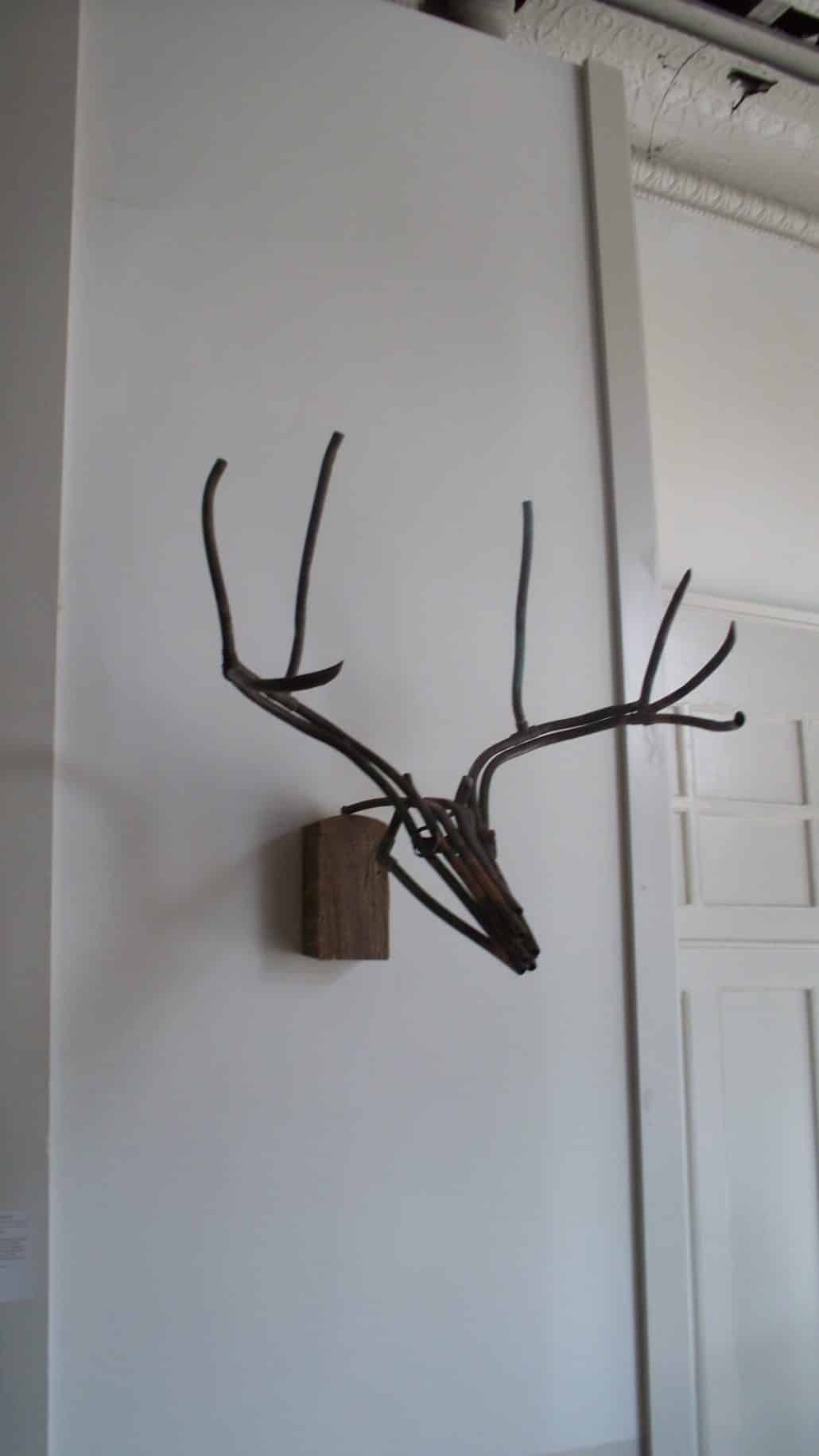
Local metalworker/woodworker Joe Medina fabricates ornamental deer racks and heads from rebar, copper and other industrial materials, and Bill Hovard produces all-natural soaps and men’s grooming products under the name Hudson Made.
Just down the road, at the historic Maple Shade Farm, first settled in 1785, I got to sample some of the local foods and beverages. The offerings included six handmade sausages by the Catskill Food Company (maple date breakfast sausage, anyone?), handcrafted jams and jellies by Maple Shade Farm Vintage Pantry, ciders made from wild and heirloom apples by Wayside, and unique hard ciders by Awestruck Empire that are flavored by hibiscus/ginger and lavender/hops. Maple Shade Farm features a three-story barn that hosts all sorts of events like weddings, corporate meetings, and the Taste of the Catskills, a food, wine, beer, and craft event (October 8 and 9) and sports a mountain-spring-fed pond and a herd of free-roaming Berkshire hogs in one of the most pleasurable pastoral settings imaginable.
I ended my day and Catskill visit in Bethel, where I toured the Woodstock Museum, “a destination for anyone who lived through the Sixties or wished they had.” As might be expected, the displays of photos, video clips and memorabilia celebrate Woodstock but also cover the history of the tumultuous era of the Sixties.
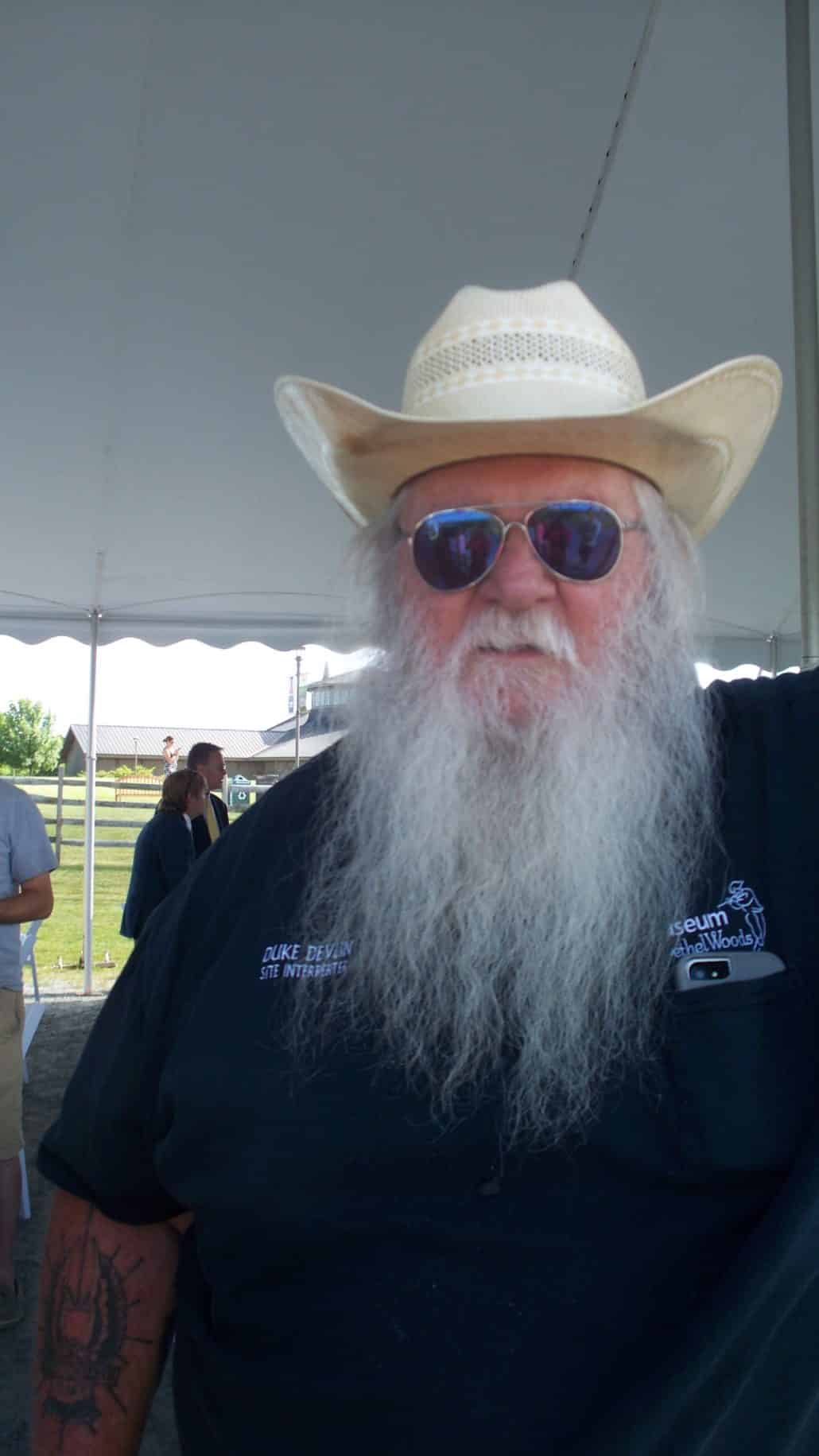
Just a few hundred yards outside, the calm of the great expanse of meadow belies the raucous events that took place there in August 1969 and drew 400,000 people. As luck would have it, I managed to meet up with Duke Devlin, who attended Woodstock after hitchhiking to the event with a friend from Amarillo, Texas.
“In those days, long-haired hippies were like nuns,” he said. “They traveled in pairs. We got separated at the end of the road and haven’t seen each other since.”
Woodstock, like the Borscht Belt era, is now gone, but the Catskills are now reinventing themselves with another brand of tourism, one that has a recreational emphasis and includes the beauty and healing power of nature, culinary prowess and the creative productivity of many of its arts-and-crafts residents.
For more information on the Catskills, log on to Iloveny.com.





The gourmet restaurants in the Catskill region are my favourite culinary getaways from New York city. Next time I go, I need to check out some of the other stores mentioned here. Have you been to Peekamoose in Big Indian? The food is always fresh and delicious there.